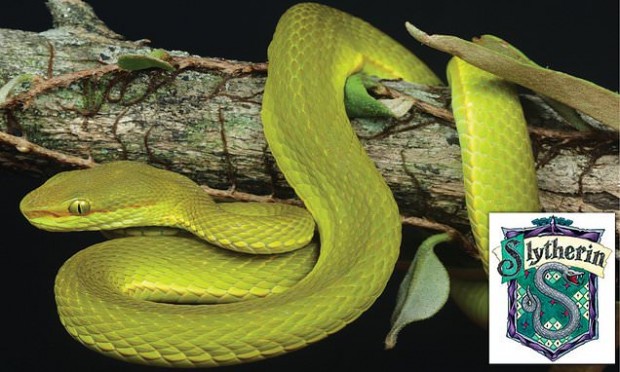A new species of pit viper was recently discovered and its scientific name was named after Hogwarts founder and J.K Rowling's Harry Potter character Salazar Slytherin.
The new pit viper species was discovered in India. Its scientific name is Trimeresurus Salazar, which is named after the Harry Potter character, Salazar Slytherin. The snake is a green venomous, and scientists are very glad to introduce it to the world.
Where the name originated
Salazar Slytherin is one of the four founders of Hogwarts School of Witchcraft and Wizardy. Salazar also owns one house in the school and is named after him. The Slytherin house has a snake symbol, and their uniforms and house theme is also in green.
Slytherins-- the students under Slytherin house-- is known to have the ability to talk to snakes. The gift of having the ability to talk to snakes is called "Parselmouth."
In the second book of the Harry Potter series, a giant snake was featured and is called the Basilisk, and it terrorized the whole Hogwarts school and its students. It was also stated in the book that the snake was owned by a student from Slytherin a few years back from Harry Potter's time.
The new pit viper species
According to scientists, the male Salazar pit viper differs from the female ones because they have an orange-reddish stripe running along with their head. They also have more teeth compared to the other pit vipers.
The snake was discovered by a group of researchers from the National Centre for Biological Sciences and Bombay Natural History Society. They found the snake in Arunachal Pradesh in India.
The new Salazar pit viper
According to scientists and researchers who were able to study the new pit viper species, the snake is described as a charismatic venomous serpent, and it has been lurking not only in India but also widely across the southeastern and easter parts of Asia.
The species also belongs to the genus of Trimeresurus, and according to the study's author Zeeshan Mirza, Trimeresurus are structurally cryptic, and it is difficult to differentiate them to other species under the genus.
Structurally cryptic species refers to two or more creatures or animals look literally the same, however, they are actually different species.
Mirza also further explained that the Salazar snake's real diversity could be underestimated. Since Mirza and his research team found the pit viper snake in the Arunachal Prades, the new species belongs to the Himalayan biodiversity hotspot.

Mirza also revealed that the Salazar pit viper was the second species that they have discovered during their expedition to the Arunachal Pradesh. He also added to the study that the discovery reflects severely bad on the existing biodiversity documentation across the north-eastern part of India.
According to Mirza, they will be conducting more dedicated surveys in the future across the northeastern part of India to help them document and record the biodiversity. The biodiversity in the country is now under serious threat because there are many development activities conducted in the area, which particularly include road widening, agriculture, and projects that are related to hydro-electricity.
The findings of Mirza and his research team about the Salazar pit viper are published in the journal Zoosystematics and Evolution,

 Share on Facebook
Share on Facebook























